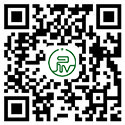1. What is the measuring principle of vs400a zinc oxide arrester resistive current tester?
A: digital signal processing and harmonic analysis technology and Fourier transform technology are adopted to separate the resistive current in the whole current through the sampling of current signal and Pt voltage signal, so as to realize the measurement of resistive current.
2. Why is the main parameter measured resistive current rather than full current?
A: because the resistive current can produce active power (active power is calorific value), when the arrester suffers from damp, aging and other faults, its resistive current will increase sharply, while most of the total current is capacitive current, which generates reactive power, and the reactive power does not generate heat. Its data has little significance for reflecting the quality of the arrester.
3. What are the parameters measured by the resistive current tester of vs400a zinc oxide arrester?
Answer: full current, resistive current, fundamental resistive current, 3rd, 5th and 7th harmonic resistive current, active power, system voltage, etc. Note: active power, and system voltage cannot be measured without Pt measurement.
4. How to judge whether the data of zinc oxide arrester is qualified?
A: generally, the method of comparison with the initial data (or the data of the previous year) is adopted. If the measurement data is 150% of the initial data, the measurement times shall be increased. If the measurement data is 200% of the initial data, the lightning arrester shall be removed for further measurement. Before the 1990s, the accident rate of zinc oxide arrester was 0.219 phase / 100 phase · year.
5. If there is no initial data, how to judge the quality of lightning arrester?
A: there is no initial data. The quality of the arrester can be judged according to the phase angle of the voltage and current of the arrester (hereinafter referred to as the phase angle). Generally, the phase angle of new arrester is 85 °, and the phase angle of fault free arrester in operation is 80 ° - 85 °. Ws400a can directly display this angle. If it cannot be directly displayed, it can be calculated according to the following formula:
θ= Arc cos(Ir/1.414/Ix)
Of which: θ— phase angle
IR - peak value of resistive current
IX - effective value of full current
Generally speaking, the peak value of resistive current is about 1 / 5 of the effective value of full current, which can judge that the arrester is a fault free arrester, and this data can be used as the initial value of the arrester.
6. How to connect the current test line of your instrument? Does this connection affect the accuracy of the data?
Answer: the current test line of the instrument is connected to both ends of the discharge counter. Generally, the internal resistance of the discharge counter is tens of ohms, while the internal resistance of the current channel of the instrument is about zero (only the test line resistance), so it is equivalent to short circuiting the discharge counter with the instrument, and almost all currents pass through the interior of the instrument, so the counter does not reflect the accuracy of current data.
7. How to judge whether the current line is connected properly before measurement?
Answer: after wiring, the discharge counter should be in short circuit state, so the counter pointer should return to zero. If the pointer does not return to zero, it means that the test line is not connected properly. But we should pay attention to the following problems: ① during three-phase measurement, phase a must return to zero, and phase B / C only returns to zero when it is measured. ② For single-phase measurement of B / C phase, the counter will return to zero only during measurement. ③ When some counters are damaged, the pointer may not return to zero.
8. How to connect the voltage test line of your instrument? Is it safe to connect in this way?
Answer: the voltage test line is connected to PT secondary test 100 / sqrt (3) = 57.74v. In order to protect Pt safety, the instrument has three protection measures: ① the internal resistance of voltage channel is 120K Ω, and the current through it is about 0.05ma. ② The voltage channel is completely isolated from the instrument and will not cause Pt failure due to misoperation or damage of the instrument. ③ The top of the test line is respectively connected with 0.2A fuse tube, which will not cause Pt short circuit due to the damage of the test line.
9. What is the measurement principle without Pt?
Answer: hs2400 without Pt adopts the principle of harmonic analysis. By analyzing the content of high-order harmonic of current signal, we can roughly understand the phase relationship between fundamental current and voltage signal, so as to obtain resistive current. Its accuracy is affected by the content of harmonic in voltage signal, and the general error (compared with PT) is no more than 10%. In three-phase measurement, the three-phase comparison method is applied at the same time. Theoretically, the current phase difference of three qualified arresters of phase a, B and C under the operating state (without calculating the phase-to-phase interference) is 180 degrees. If the resistive current of one phase arrester increases, its phase angle must deviate. The instrument judges the phase difference by sampling the phase difference of three-phase arrester, If there is a lightning arrester whose data is obviously inconsistent with that of other two phases, key monitoring and further accurate measurement are required.
10. How to maintain the battery?
Answer: the built-in battery used by the instrument is lithium-ion battery. Like most lithium-ion batteries, the following matters should be paid attention to in use: ① the instrument should be fully charged when idle and should be charged every three months. ② Please make sure the power switch is off after the instrument is used. ③ Avoid working or storing the instrument in a place with too high or too low temperature.
11. What is the data trend of arrester resistive current under the action of phase-to-phase interference?
A: under the influence of interphase interference, the data of phase A is larger and the data of phase C is smaller. Phase B data is basically not affected by phase to phase interference.


 中文
中文



 Home
Home Tel
Tel Product
Product